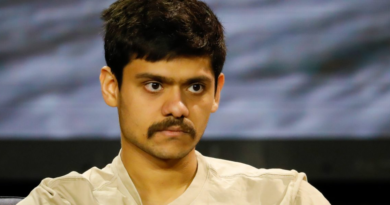Starfish Space captures new funding ahead of orbital servicing demo mission
In the present moment, if a critical component on a satellite malfunctions or it runs out of fuel, satellite operators have no choice but to consider that asset caput.
Starfish Space is one of a handful of companies that wants to change that. The four-year-old company is developing a satellite servicing vehicle called Otter, which will be able to perform a variety of maintenance and repair tasks, or deorbit the satellite once it reaches the end of its useful life.
While it’s developing the Otter, the company is planning on launching a demonstration version of the vehicle, playfully called Otter Pup, this summer. That spacecraft will hitch a ride on a Launcher Orbiter 2 space tug (which itself will hitch a ride on a SpaceX Falcon 9 rocket); once in orbit, Otter Pup will deploy from Orbiter, then attempt to rendezvous and dock with the spacecraft.
“If successful, this will be the first ever time that two separate commercial satellites have docked in low Earth orbit,” Starfish operations lead Ari Juster told TechCrunch.
In advance of this first mission, Starfish announced today that it has closed $14 million in new funding jointly led by Munich Re Ventures and Toyota Ventures, and includes participation from all the major investors from Starfish’s seed round: PSL Ventures, NFX, and MaC VC.
The money will accelerate the development of the Otter space tug and the Otter Pup mission. The new capital will also help the company grow, from its present workforce of 27 to upward of 10 to 15 more people before the year is out.
Starfish says orbital servicing could unlock tons of value for satellite operators, who could use Otter to get additional operational years out of an asset already in space. Juster said the company’s been able to bring its costs down, in part, because of the declining costs of launch and the greater availability of types of components needed to enable its missions. Juster also said its team has been able to focus on the core breakthrough technologies — like guidance, navigation and control (GNC) — needed to execute something as complex as satellite capture and docking.
This very initial mission, though, will focus not just on docking but also on the moments just before that, Juster explained. “What’s the distance at which we can actually acquire contact with the Orbiter 2? How can we use computer vision to recognize it, to understand its orientation? How do you use Cephalopod [Starfish’s GNC software] to continue to optimize the trajectory?” he said.
It could take multiple tries to dock with Orbiter 2. Depending on how much fuel is leftover on Otter Pup, Juster said the company may try different maneuvers while in space.
Starfish frequently hears from potential customers on the need for orbital servicing capabilities, Juster said.
“This is actually a common refrain we get from customers on the commercial and government side, [which] is, ‘Oh boy, if you guys had Otters in space today we could have really used you,’” he said. While he declined to comment on Starfish’s customer contracts, he said the reception to Otter has been even better than anticipated.
“We’ve frankly been pleasantly surprised,” he said. “We’re obviously optimists about the business case here and the demand but we’ve even been pleasantly surprised by the reception from customers.”


